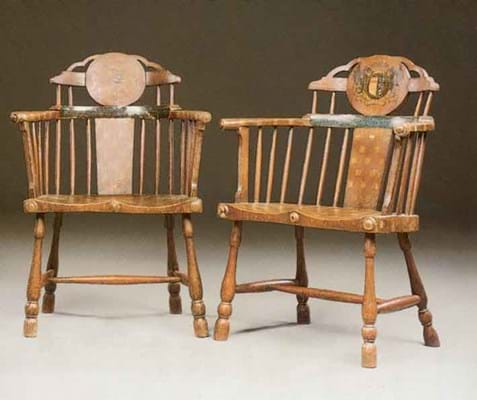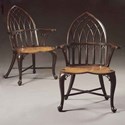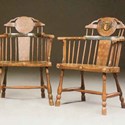Far from being modest and solely practical, the George III armchairs at Sotheby's (20/12% buyer's premium) Important English Furniture sale on June 30 were exceptionally sophisticated.
Of Gothic inspiration with elegant tracery backs and pierced crocketed angles, the chairs were constructed from Scottish laburnum, a timber highly prized for cabinet making North of the Border.
Part of a six lot consignment of furniture that had been at Kier House, Perthshire until 1983 (after which they had left the house but remained in the family), they remind us that in the 18th century Windsor armchairs could be situated in the most esteemed interiors.
Sotheby's reasonably bullish £60,000-80,000 estimate proved pretty accurate, the hammer falling at £62,000 to the London trade.
The pair of Windsors at Christie's (19.5/12% buyer's premium) Important English Furniture sale on July 1 were interesting armorial decorated pieces from a known set thought to have been made for Enmore Castle and marking the marriage of John Perceval, second Earl of Egmont to his second wife Catherine Crompton in 1756.
An identical chair is held in the V&A and last year one appeared chair at Brightwell's of Leominster, selling for £19,000 - see story here.
These chairs, with their faceted spindles in the back, appear to be have been made in the West Country, possibly Bristol. The spindles seem to have been cut with a draw knife rather than turned on a lathe. It is most likely that they were made from beech, walnut and elm, although the use of sycamore was not uncommon in West Country chairs of this period. One leg and one stretcher have been replaced to one of the pair.
Estimated at £15,000-25,000, the pair at Christie's sold on low estimate.








